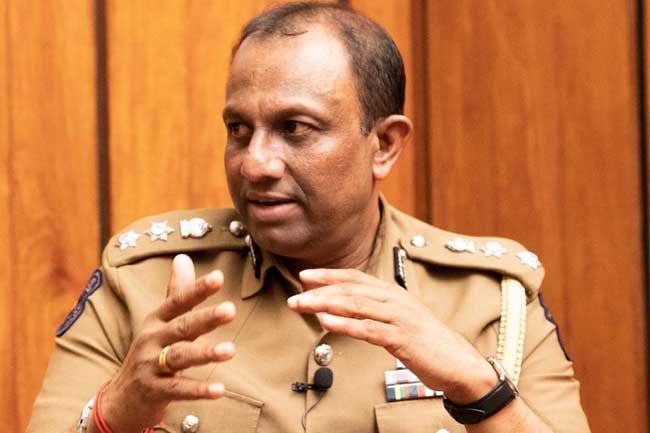A 17-year-old youth has been stabbed to death over a TikTok video in Grandpass on 3 January evening. According to the police, the victim was attacked by a group of six boys, one of whom stabbed the youth over a TikTok video dispute. Economynext reports that the account in question was centered around the victim’s account which has over 2,000 followers. his last two videos uploaded a day before the incident featured photos of an unidentified girl with a soundtrack of breakup songs and voice clips.
A resident of Wellampitiya, the youth was admitted to the Colombo National Hospital following the incident where he succumbed to his injuries. The police further stated that investigations are currently underway to apprehend the suspect.
The dark side of TikTok
Unfortunately, this isn’t the first time TikTok has played a role in endangering someone’s life. Early 2021, a youth from Pakistan shot himself in a fake suicide stunt gone wrong. It’s reported that he isn’t the only one to share a similar fate owing to the platform.
After all, the platform thrives on outrageous stunts and trends for users to get widely noticed. Most of these come in the form of “challenges”. While general themes often come out as entertaining and fun, there are a noticeable few that directly puts people in danger and there’s little to prevent users from attempting these. One such incident is the “milkcrate challenge” where a 29-year-old Uber driver almost snapped his spine while attempting the challenge.
Another challenge dubbed “blackout challenge” was linked to several child deaths. The challenge prompts users to hold their breath until they pass out. One of the casualties of the social media stunt was a 12-year-old Colorado who was found unconscious in his home was put on life support in the hospital. He died 19 days later. Again, he wasn’t the only victim.
A plea for the company to do better
Another victim of the blackout challenge, a 10-year-old girl prompted the platform to ban users 13 and under in Italy back in early 2021. Following the incident, the company agreed to repass every user in Italy through the age verification process. Furthermore, Italian regulators stated that the company would utilize AI to identify underage content.
Right now, users under 13 can sign up for TikTok but have restricted access including Sri Lanka. Kids don’t have a public profile, can’t post their own content, comment on videos, or message other users. In fact, TikTok introduced some age-specific changes for users under 18 beginning 2021.
Additionally, a US-based parent group named the ParentsTogether is calling on the company to enable mirror accounts for children on the platform. This means that parents would be able to see exactly what type of content TikTok is serving their kids. So far, the petition has crossed 12,500+ signatures.
While TikTok does have parental controls on the app such as setting an age limit or enabling a restricted mode, there’s no control that allows parents to see what content their kids are seeing.
Sri Lanka’s rocky relationship with social media
It can be tempting to demand authorities to ban the platform altogether. That may be a quick fix to things. However, that will do little to solve the problem. Plus, this isn’t a phenomenon unique to TikTok alone. True, TikTok’s design pushes the problematic aspects of social media far more aggressively than the other platforms out there. It doesn’t help that a large chunk of the user base is under 26 either.
But social media, in general, has been the catalyst for violence and endangering people’s lives on more than a few occasions. Back in 2018, Facebook and WhatsApp were partly responsible for fueling the tensions that led to the violent Digana riots. Facebook actually released an official statement of apology on the matter a couple of years later.
So what needs to be done? Should social media be banned entirely? Should it be regulated by the government? It’s a delicate line between censorship and protecting the safety and common interests of the general public. Calling for better control on social media platforms in defense of user safety may seem sensible on paper. But how that plays out practically depends entirely on the regulatory bodies in question. Even countries like the US is battling how best to keep big tech in check.
It doesn’t help that Sri Lankan authorities don’t have the brightest history on how it handles social media. Making matters worse, the current administration is already showing signs of social media censorship, most recently with the Facebook post criticizing the Sri Lanka president.
The incident in question is where Asha Dilrukshi Perera, a female activist was called by the CID for a statement over a facebook post she shared that allegedly “insulted and threatened the life of President Gotabaya Rajapaksa”. As per The Morning, “They asked whether I had shared it responsibly. They copied everything in my phone and kept my phone with them for about two hours,” says Perera. The incident was followed by Police spokesman SSP Nihal Thalduwa stating that sharing content on social media making fun of the President is a punishable offense.

The little we can do
This begs the question of whether authorities can be trusted to protect the interests of the general public, especially when it comes to social media and Sri Lanka. Unfortunately, the answer may be a grim one.
Of course, this doesn’t mean all responsibility falls on regulatory bodies and the companies themselves. Part of the responsibility falls on us, the user as well. It could be something as simple as creating better awareness around your own communities or practicing digital hygiene around social media yourself.
If the 17-year-old’s tragic incident tells us anything is that we all can and should play a role in discouraging this dangerous side of social media. Particularly at a time where digitalization is at the center of attention.







GIPHY App Key not set. Please check settings